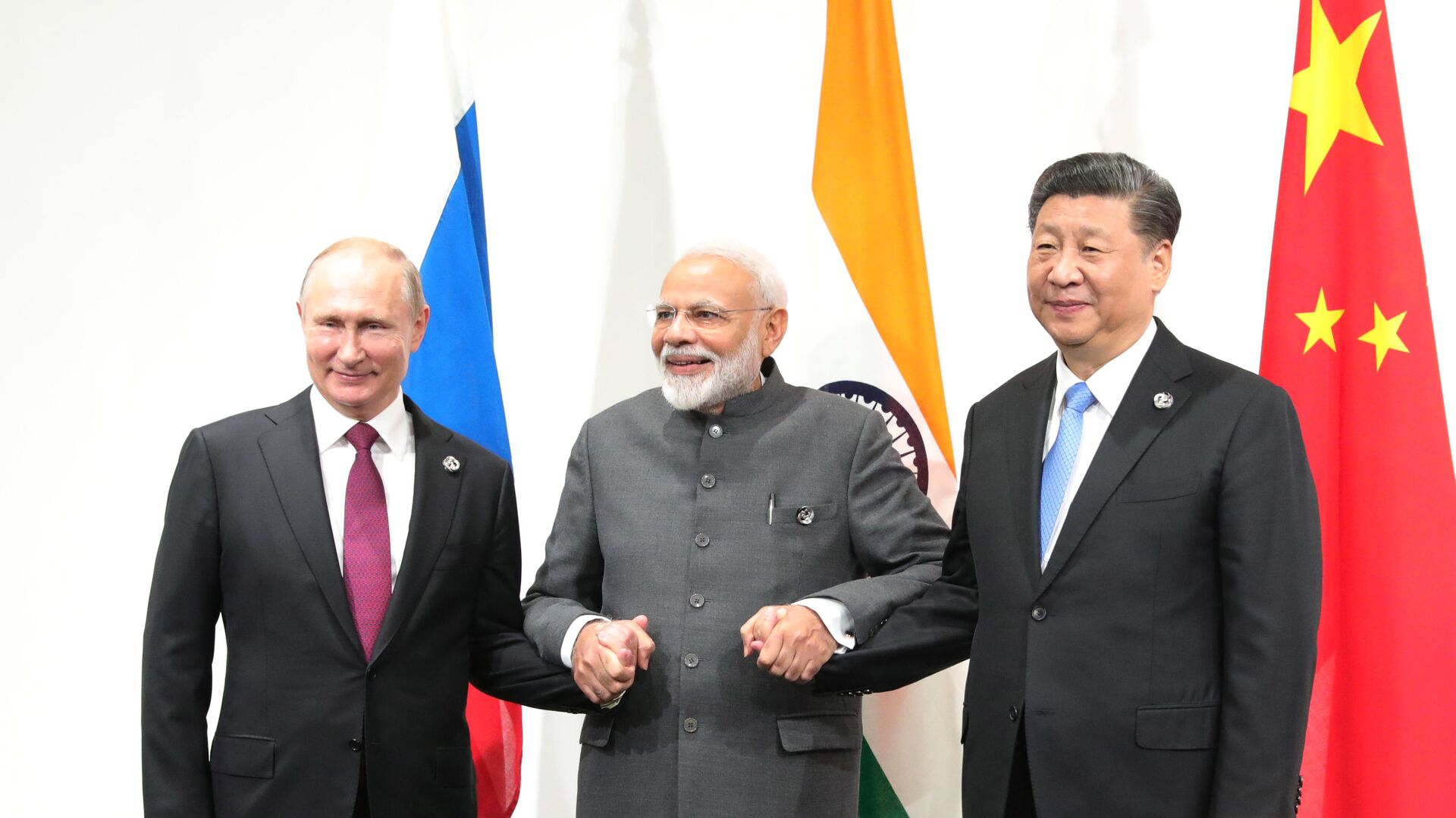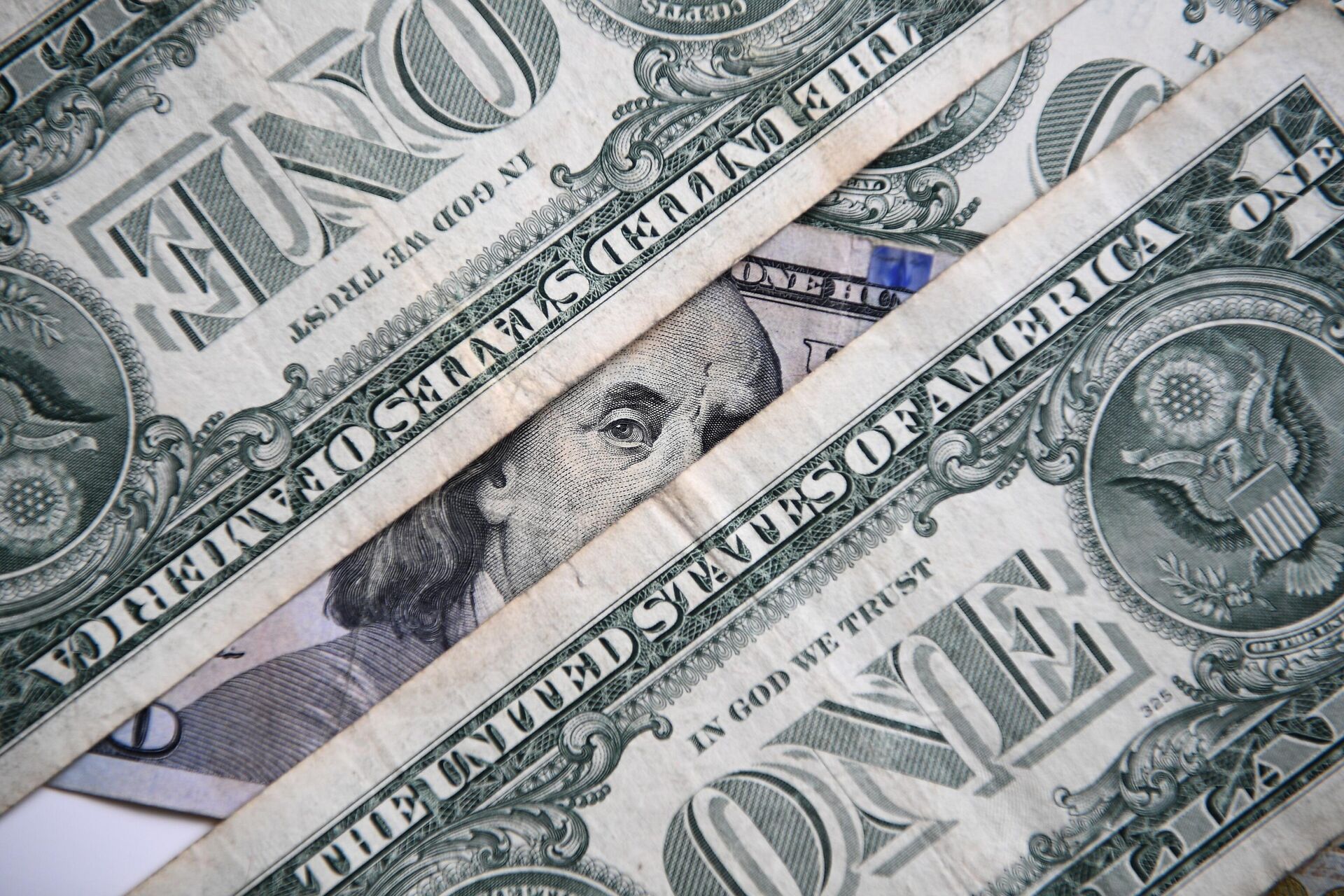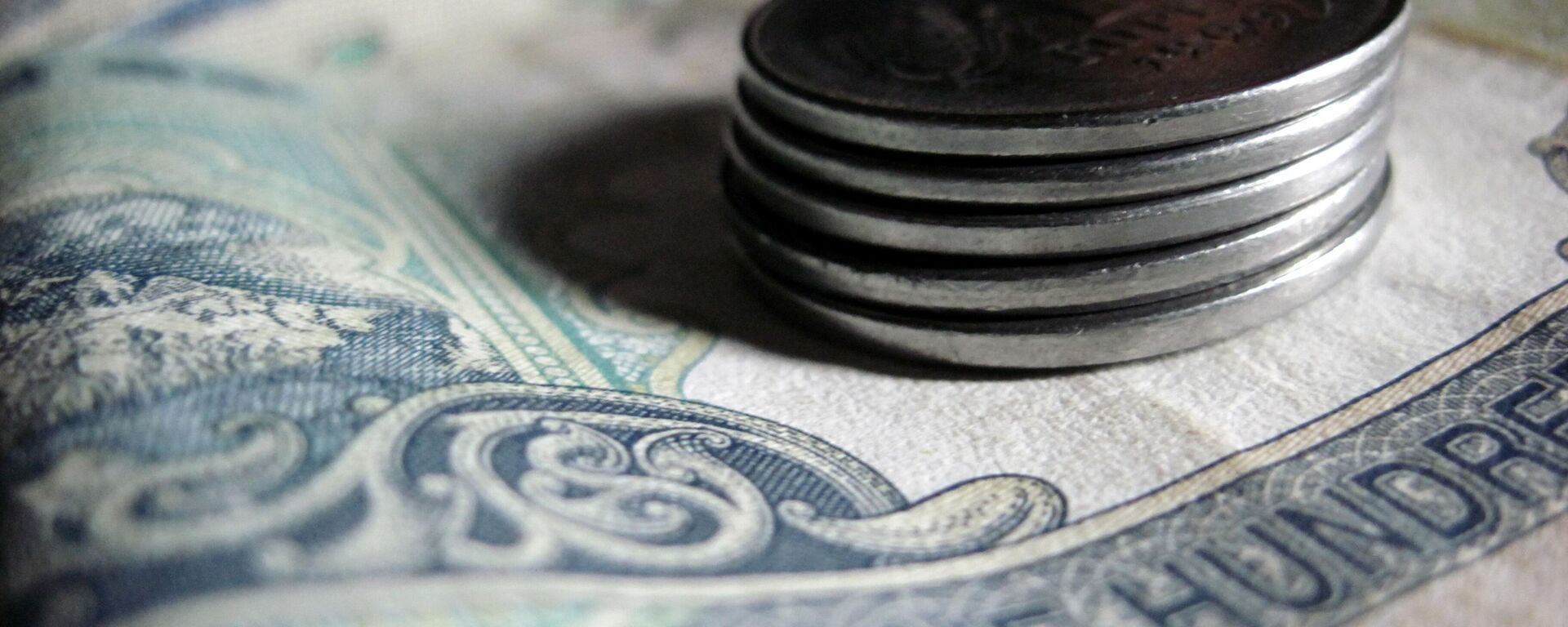https://sputniknews.in/20231023/what-is-challenging-indias-middle-ground-tightrope-walking-5031175.html
What is Challenging India’s Neutral Stance?
What is Challenging India’s Neutral Stance?
Sputnik India
Russian Crude Imports, Resistance To Yuan Settlement Challenge India's Middle Ground Tightrope Walking.
2023-10-23T20:39+0530
2023-10-23T20:39+0530
2023-10-24T10:45+0530
sputnik opinion
india
russia
china
narendra modi
hamas
g7
dedollarisation
rupee-rouble trade
oil exporters
https://cdn1.img.sputniknews.in/img/07e7/08/19/3836674_0:0:3028:1703_1920x0_80_0_0_4f014073db1063c29abaf7c67bf2658f.jpg
The success of India's neutral status has pivoted around India's procurement of competitively priced Russian crude oil. While the West finds Indian crude imports from Russia unsettling, Russia now appears unhappy with Indian resistance to settle the imports in yuan. One side perceives India as being greedy, the other, thankless! Reminiscent of the adage - You can't have your cake and eat it too!On October 20, Bloomberg reported, quoting an Indian official directly involved in the negotiations and another senior person at a state-owned oil refinery, that some Russian oil suppliers are demanding payment in yuan but Prime Minister Narendra Modi’s government won’t agree to those requests.Since 70% of crude refining in India is handled by state owned refineries, the government calls the shots on the mode of settlement. In the past, state owned Indian Oil Corporation had made a yuan payment for Russian crude, but since then the government has clamped down on yuan settlements.Russia is not open to Indian Rupee settlement because of a whopping trade imbalance - In the 8 months of January - August, India purchased $41.2 billion worth of Russian goods, mostly crude oil, while Russia purchased just $2.6 billion of Indian goods. Russia has an excess supply of rupees because India doesn't have quality manufactured goods to export to Russia.Trade ImbalanceIndia's reluctance to pay for Russian imports in yuan may not be related to India's simmering border dispute with China, as is often projected in Western and Indian media. The border dispute, for example, has had little impact on India's trade with China. In the same period, January - August, India's $75.3 billion trade turnover with China was second only to India's $80.8 billion trade turnover with the US. India's hunger for Chinese manufactured goods appears insatiable, the border dispute notwithstanding.India's reluctance to settle Russian trade surplus in yuan is more likely attributable to its trade imbalance with China, just as is the case with Russia.China's exports to India in the first half of this year totalled USD 56.53 billion, while India's exports to China during the same period totalled USD 9.49 billion. So how does India get the yuans to settle the Russian trade surplus?India prefers that Russia make investments in energy and infrastructure projects in India or invest in Indian government bonds. But, from the Russian point of view, that is a long term solution that doesn't meet Russia's immediate needs. Russia has a war to fight against an adversary that is backed by Western military and economic might, while coping with the ruthless economic sanctions imposed by the west.Crude Oil Imports From RussiaFollowing the start of the Russian Special Military Operation (SMO) in Ukraine on February 24, 2022, India chose to ignore the G7's economic sanctions against Russia citing the low income levels of its citizens and the vulnerability of its economic structure to the adverse effects of rising oil prices. Not pleased, the G7 reluctantly chose to go along with India's choice.Since the start of the SMO, Russian crude is priced significantly lower than the prevailing world market price. As a result of India's readiness to buy Russian crude, India’s import of crude oil from Russia, which was less than $2.5 billion in 2021-22, increased nearly 13 times in 2022-23 to over $31 billion.Not only has India reaped an economic bonanza, it has also managed to diversify its sources of procurement.Domestically, the Indian government projects the defiance of sanctions as proof of India's emerging major power status.Rupee-Ruble Trade MechanismIndia and Russia have been making efforts to reactivate the rupee-ruble trade arrangement that they have used in the past to settle dues in rupees instead of dollars or euros.The efforts have so far not yielded results. The fact that Russia uses capital controls to moderate ruble value fluctuations and the relative volatility of the Indian rupee are reportedly some of the challenges that experts from the two countries are grappling with.ConclusionRussia has an excess supply of rupees, which it’s struggling to use. Russia's desire to put its rupees to good use by converting them to yuan is understandable. It's not aimed at forcing India to adopt the yuan for international trade, it's aimed at funding imports from China on which Russia is becoming increasingly dependent.There are other good reasons why India must continue to import Russian crude, besides cost advantage. The conflict between Hamas and Israeli Defence Forces will likely be prolonged. There is a chance it could expand into a regional conflict, which may span many years. Crude oil could become more expensive, even scarce. As such, it's important for India to hold tightly onto alternative sources of supply.The challenge before India is not only to settle the trade surplus with Russia, or eliminate it, but to do so without antagonising the West.Were India truly a great power, the current trade imbalance would likely not have emerged. India has a lot that Russia would willingly import from India . Brahmos-A air launched missiles, for example, Russia would be ready to buy USD billions worth. Indeed, 49% of Brahmos Aerospace is owned by Russia, so a Brahmos-A transfer deal would not technically be an export. India has procured weapon systems from friendly nations such as Israel and France when engaged in hostilities with Pakistan, so there is no moral issue either.However, domestic projections notwithstanding, India has to live with the realities of this world. The latitude it enjoys to go against Western dictates is limited.If India has the option to convert its USD reserves to yuan without inviting US sanctions, it needs to exercise the option and clear the trade surplus accruing to Russia.Considering that India's half yearly trade turnover with China is USD 56.53 billion there is really no geopolitical rationale for not settling its trade surplus with Russia in yuan.In the long term, India needs to energise its domestic manufacturing industry to expand exports. Due to G7 economic sanctions, Russia's need to procure goods such as automobiles, general machinery, and electronic equipment from China and India will increase. It will be a pity if the Indian government lets China seize all the opportunities.If the SMO in Ukraine lasts a long time, which it just might do, India will once again come under G7 pressure, when Indian exports of manufactured goods to Russia start to rise. But that is a bridge that the Indian political leadership can cross when they get to it.
https://sputniknews.in/20230911/russia-could-invest-billions-of-rupees-in-indian-stocks-infrastructure-expert-4195052.html
india
russia
china
Sputnik India
feedback.hindi@sputniknews.com
+74956456601
MIA „Rossiya Segodnya“
2023
News
en_IN
Sputnik India
feedback.hindi@sputniknews.com
+74956456601
MIA „Rossiya Segodnya“
Sputnik India
feedback.hindi@sputniknews.com
+74956456601
MIA „Rossiya Segodnya“
russian crude imports, resistance to yuan settlement challenge india's middle ground tightrope walking, indo-russian relations, india and russia, china and india, india and china, trade in national currencies, special military operation, ukraine-russia war
russian crude imports, resistance to yuan settlement challenge india's middle ground tightrope walking, indo-russian relations, india and russia, china and india, india and china, trade in national currencies, special military operation, ukraine-russia war
What is Challenging India’s Neutral Stance?
20:39 23.10.2023 (Updated: 10:45 24.10.2023) India's neutral status in the Ukraine conflict, which has been a success story so far, may now lead the country into rough waters.
The success of India's neutral status has pivoted around India's procurement of competitively priced Russian crude oil. While the West finds Indian crude imports from Russia unsettling, Russia now appears unhappy with Indian resistance to settle the imports in yuan. One side perceives India as being greedy, the other, thankless! Reminiscent of the adage - You can't have your cake and eat it too!
On October 20, Bloomberg reported, quoting an Indian official directly involved in the negotiations and another senior person at a state-owned oil refinery, that some Russian oil suppliers are demanding payment in yuan but Prime Minister Narendra Modi’s government won’t agree to those requests.
Since 70% of crude refining in India is handled by state owned refineries, the government calls the shots on the mode of settlement. In the past, state owned Indian Oil Corporation had made a yuan payment for Russian crude, but since then the government has clamped down on yuan settlements.
Russia is not open to Indian Rupee settlement because of a whopping trade imbalance - In the 8 months of January - August, India purchased $41.2 billion worth of Russian goods, mostly crude oil, while Russia purchased just $2.6 billion of Indian goods.
Russia has an excess supply of rupees because India doesn't have quality manufactured goods to export to Russia.
India's reluctance to pay for Russian imports in yuan may not be related to India's simmering border dispute with China, as is often projected in Western and Indian media. The border dispute, for example, has had little impact on India's trade with China. In the same period, January - August, India's $75.3 billion trade turnover with China was second only to India's $80.8 billion trade turnover with the US. India's hunger for Chinese manufactured goods appears insatiable, the border dispute notwithstanding.
India's reluctance to settle Russian trade surplus in yuan is more likely attributable to its trade imbalance with China, just as is the case with Russia.
China's exports to India in the first half of this year totalled USD 56.53 billion, while India's exports to China during the same period totalled USD 9.49 billion. So how does India get the yuans to settle the Russian trade surplus?
India prefers that Russia make investments in energy and infrastructure projects in India or invest in Indian government bonds. But, from the Russian point of view, that is a long term solution that doesn't meet Russia's immediate needs. Russia has a war to fight against an adversary that is backed by Western military and economic might, while coping with the ruthless economic sanctions imposed by the west.
Crude Oil Imports From Russia
Following the start of the Russian Special Military Operation (SMO) in Ukraine on February 24, 2022, India chose to ignore the G7's economic sanctions against Russia citing the low income levels of its citizens and the vulnerability of its economic structure to the adverse effects of rising oil prices. Not pleased, the G7 reluctantly chose to go along with India's choice.
Since the start of the SMO, Russian crude is priced significantly lower than the prevailing world market price. As a result of
India's readiness to buy Russian crude, India’s import of crude oil from Russia, which was less than $2.5 billion in 2021-22, increased nearly 13 times in 2022-23 to over $31 billion.
Displacing traditional suppliers of crude to India - such as Iraq, Saudi Arabia, and the UAE - Russia is now the largest supplier of oil to India.
Not only has India reaped an economic bonanza, it has also managed to diversify its sources of procurement.
Domestically, the Indian government projects the defiance of sanctions as proof of India's emerging major power status.
Rupee-Ruble Trade Mechanism
India and Russia have been making efforts to reactivate the rupee-ruble trade arrangement that they have used in the past to settle dues in rupees instead of dollars or euros.
The efforts have so far not yielded results. The fact that Russia uses capital controls to moderate ruble value fluctuations and the relative volatility of the Indian rupee are reportedly some of the challenges that experts from the two countries are grappling with.
Russia has an excess supply of rupees, which it’s struggling to use. Russia's desire to put its rupees to good use by converting them to yuan is understandable. It's not aimed at forcing India to adopt the yuan for international trade, it's aimed at funding imports from China on which Russia is becoming increasingly dependent.
There are other good reasons why India must continue to import Russian crude, besides cost advantage. The conflict between Hamas and Israeli Defence Forces will likely be prolonged. There is a chance it could expand into a regional conflict, which may span many years. Crude oil could become more expensive, even scarce. As such, it's important for India to hold tightly onto alternative sources of supply.
The challenge before India is not only to settle the trade surplus with Russia, or eliminate it, but to do so without antagonising the West.
Were India truly a great power, the current trade imbalance would likely not have emerged. India has a lot that Russia would willingly import from India . Brahmos-A air launched missiles, for example, Russia would be ready to buy USD billions worth. Indeed, 49% of Brahmos Aerospace is owned by Russia, so a
Brahmos-A transfer deal would not technically be an export. India has procured weapon systems from friendly nations such as Israel and France when engaged in hostilities with Pakistan, so there is no moral issue either.
However, domestic projections notwithstanding, India has to live with the realities of this world. The latitude it enjoys to go against Western dictates is limited.
If India has the option to convert its USD reserves to yuan without inviting US sanctions, it needs to exercise the option and clear the trade surplus accruing to Russia.
Considering that India's half yearly trade turnover with China is USD 56.53 billion there is really no geopolitical rationale for not settling its trade surplus with Russia in yuan.
In the long term, India needs to energise its domestic manufacturing industry to expand exports. Due to G7 economic sanctions, Russia's need to procure goods such as automobiles, general machinery, and electronic equipment from China and India will increase. It will be a pity if the Indian government lets China seize all the opportunities.
If the SMO in Ukraine lasts a long time, which it just might do, India will once again come under G7 pressure, when Indian exports of manufactured goods to Russia start to rise. But that is a bridge that the Indian political leadership can cross when they get to it.






